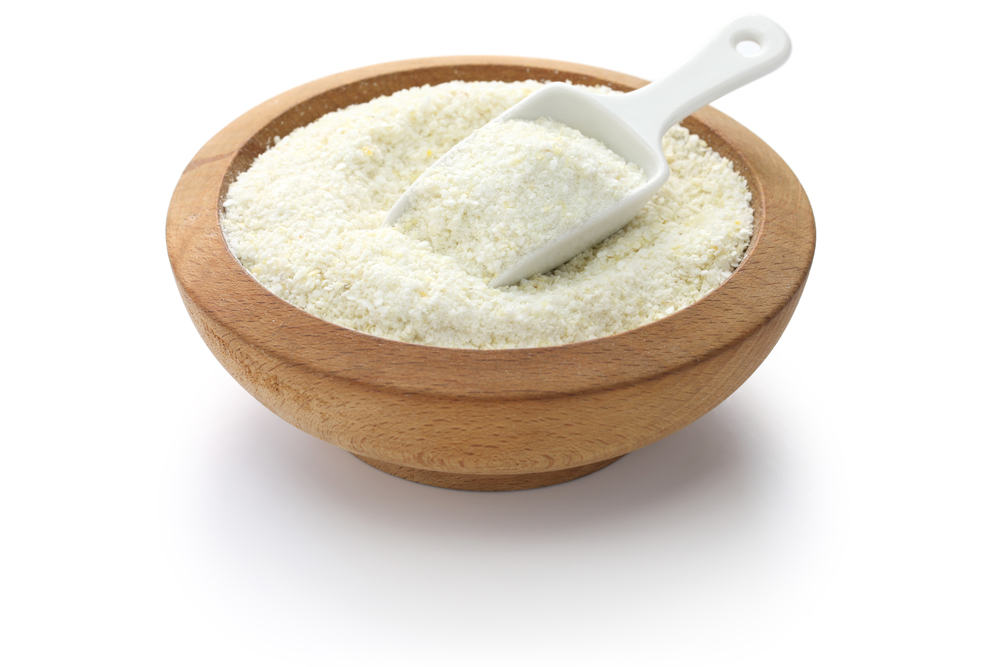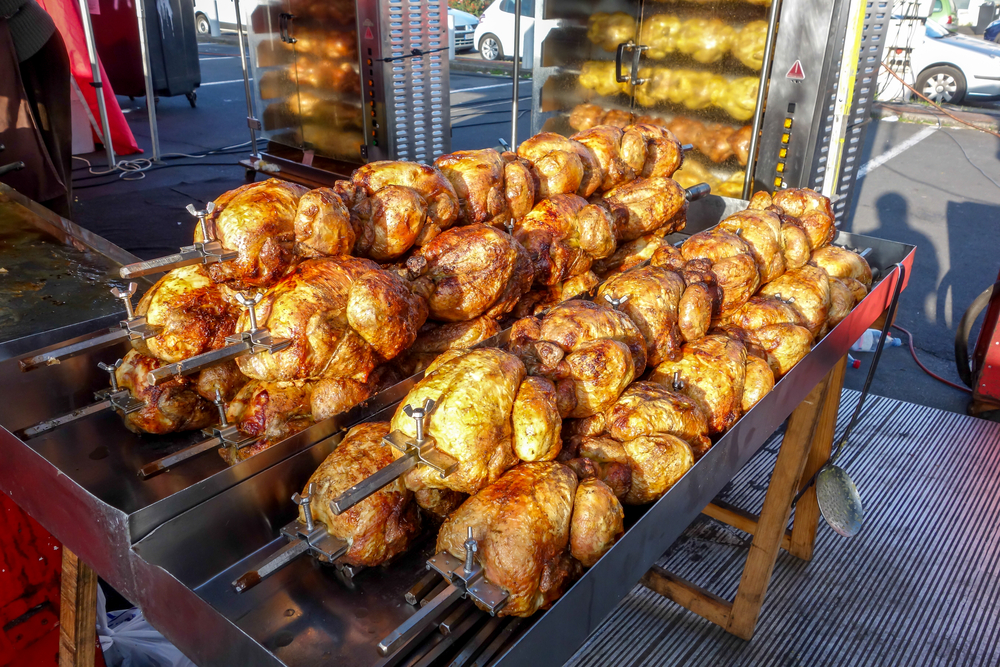As a gluten-free flour option, soya flour is a popular choice for those with celiac disease or gluten sensitivities. However, some people may not be able to tolerate soya flour due to allergies or personal preferences.
In these cases, finding a suitable substitute for soya flour is necessary. In this article, I will explore various soya flour substitutes that can be used in baking and cooking.
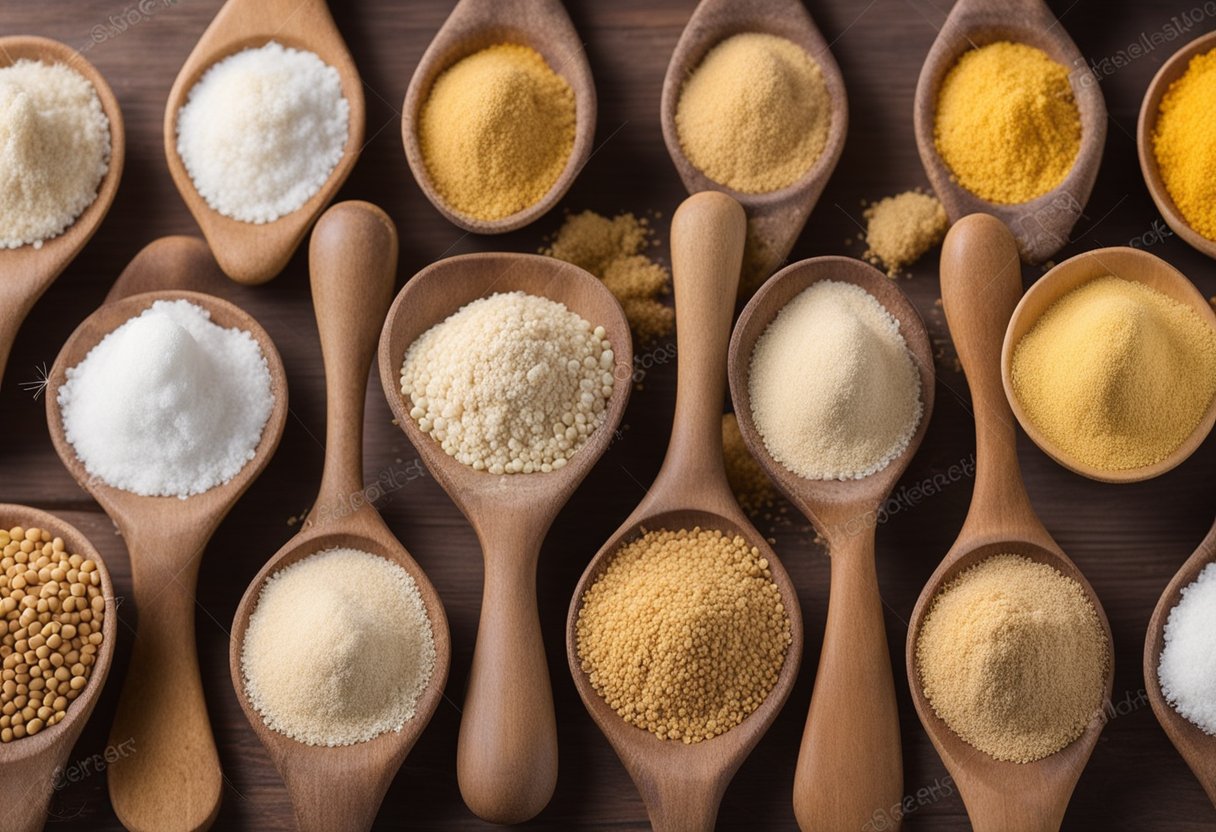
Understanding the properties of soya flour is essential in finding suitable substitutes. Soya flour is made from ground soybeans and is high in protein, making it a popular choice for those looking to increase their protein intake.
It also contains fiber, vitamins, and minerals, making it a nutritious addition to recipes. However, it has a distinct taste and can affect the texture of baked goods.
Why substitute soya flour? Some people may have an allergy or sensitivity to soy products, while others may want to avoid soy due to personal preferences or dietary restrictions.
Additionally, soya flour may not be readily available in some areas, making finding a substitute necessary. In the following sections, I will explore various soya flour substitutes that can be used in baking and cooking.
Key Takeaways
- Soya flour is a popular gluten-free flour option but may not be suitable for everyone due to allergies or personal preferences.
- Understanding the properties of soya flour is essential in finding suitable substitutes.
- There are various soya flour substitutes available for baking and cooking, including legume-based and grain-based options.
Understanding Soya Flour
As the name suggests, soya flour is a type of flour made from ground soybeans. It is a popular ingredient in baking recipes, especially for those who want to add a high-protein, plant-based component to their diet.
Soybeans are roasted and then ground into a fine powder to make soya flour. It is known for its high protein content, which makes it a popular ingredient for those who follow a vegetarian or vegan diet.
In addition to protein, soya flour is also high in fiber, vitamins, and minerals.
One of the benefits of using soya flour is that it is gluten-free, making it a great alternative for those who have gluten allergies or sensitivities.
However, it is important to note that some people may have soy allergies, so it is important to check for any allergies before using soya flour.
Soya flour also contains isoflavones, which are compounds that have been linked to various health benefits, including reducing the risk of heart disease and certain types of cancer.
However, it is also important to note that soya flour contains phytic acid, which can interfere with the absorption of certain minerals in the body.
Overall, soya flour is a nutritious and versatile ingredient that can be used in a variety of recipes. It is a great option for those who want to add more plant-based protein to their diet or who have gluten allergies.
Why Substitute Soya Flour

As someone who has experimented with different types of flours in my baking, I can tell you that soya flour is a popular ingredient in many recipes. However, there are several reasons why you may want to substitute soya flour with another type of flour.
Firstly, if you have gluten sensitivities or allergies, soya flour may not be the best option for you. Soya flour contains gluten, which can cause digestive issues for some people.
In this case, you may want to consider using gluten-free flours such as chickpea flour or lupin flour as a substitute.
Secondly, if you have a soy allergy, obviously, you cannot use soya flour. Fortunately, there are many other options available that can be used as substitutes. Chickpea flour, lupin flour, and pea flour are all excellent alternatives that can be used in place of soya flour.
Another reason why you may want to substitute soya flour is if you’re following a keto or low-carb diet. Soya flour is relatively high in carbohydrates, so it may not fit into your diet plan. In this case, coconut flour or almond flour may be a better option.
If you’re vegan or vegetarian, you may want to avoid using soya flour as well. Although it is plant-based, some people prefer to avoid soy products due to concerns about the environmental impact and potential health risks.
In this case, you can use any of the other substitutes mentioned above.
Finally, if you’re looking to increase your dietary fiber intake, soya flour may not be the best option. Although it does contain fiber, there are other flours that are higher in fiber, such as coconut flour and almond flour.
Overall, there are many reasons why you may want to substitute soya flour in your recipes. Fortunately, there are many excellent alternatives available that can be used in its place.
Gluten-Free Soya Flour Substitutes
As someone who follows a gluten-free diet, finding substitutes for soya flour can be a challenge. Fortunately, there are several gluten-free options available that can be used in place of soya flour in a variety of recipes.
One of the most popular gluten-free substitutes for soya flour is rice flour. This flour is made by grinding rice into a fine powder and can be used in a 1:1 ratio to replace soya flour in most recipes.
Rice flour is a great option for those looking for a neutral-tasting flour that won’t overpower the other flavors in the dish.
Another great gluten-free option is buckwheat flour. Despite its name, buckwheat is not related to wheat and is actually a fruit seed. Buckwheat flour has a slightly nutty flavor and can be used in a variety of baked goods, including bread, pancakes, and muffins.
Almond flour is another popular gluten-free substitute for soya flour. This flour is made by grinding blanched almonds into a fine powder and has a slightly sweet, nutty flavor.
Almond flour is a great option for those looking for a nutrient-dense flour that is high in protein and healthy fats.
Quinoa flour is another great gluten-free option that can be used in place of soya flour. This flour is made by grinding quinoa seeds into a fine powder and has a slightly nutty flavor.
Quinoa flour is a great option for those looking for a flour that is high in protein and fiber.
If you’re looking for a starch-based substitute for soya flour, chestnut starch and water chestnut starch are both great options.
These starches are made from the dried and ground chestnuts or water chestnuts, respectively. They are great for thickening sauces and gravies or can be used in gluten-free baking.
Finally, cornstarch and brown rice flour are both great gluten-free substitutes for soya flour. Cornstarch is a fine powder made from corn and is great for thickening sauces and gravies.
Brown rice flour is made by grinding brown rice into a fine powder and has a slightly nutty flavor. It can be used in a variety of baked goods, including bread, cakes, and cookies.
Overall, there are many great gluten-free substitutes for soya flour available that can be used in a variety of recipes. By experimenting with different flours and starches, you can find the perfect substitute for your favorite dishes.
Legume-Based Soya Flour Substitutes
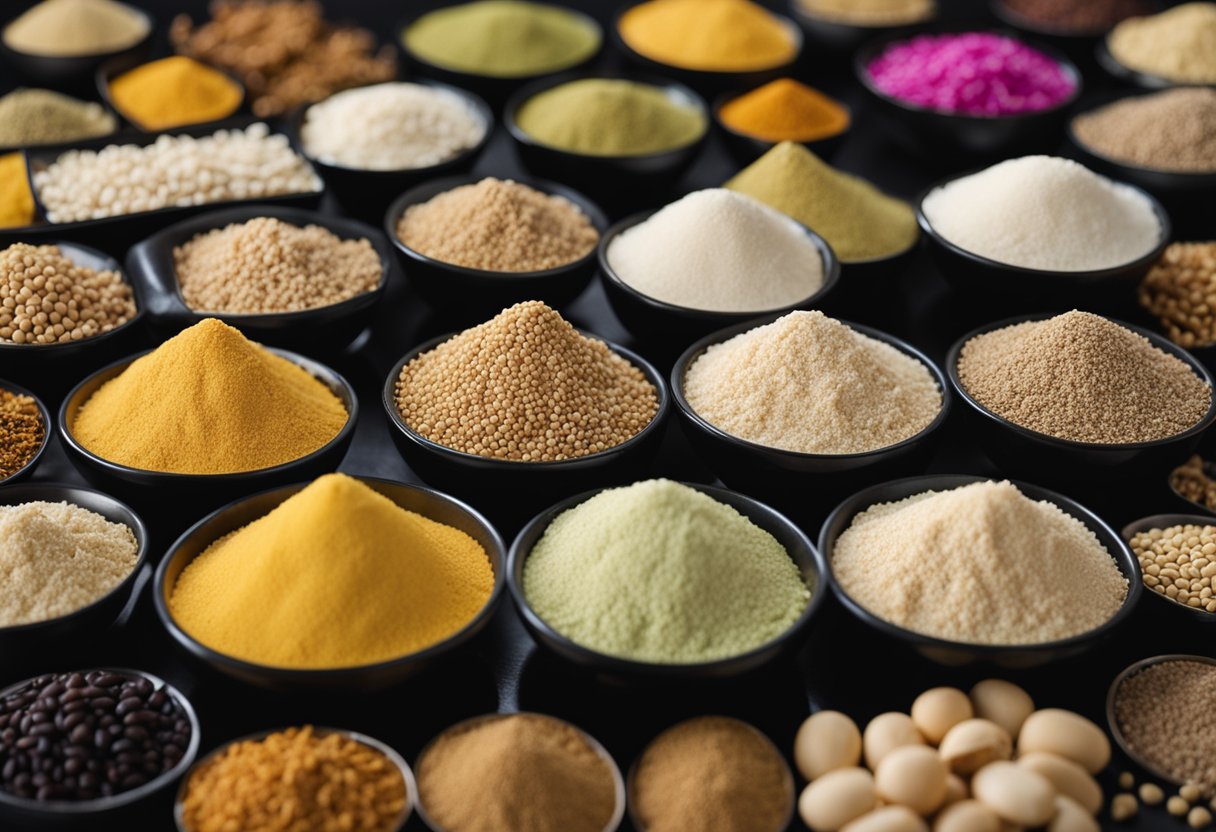
As a plant-based and protein-rich alternative to soya flour, legume-based flours are a great choice for those who follow a vegan or vegetarian diet. Here are some of the best legume-based substitutes for soya flour:
Pea Flour
Pea flour is a versatile flour made from dried and ground peas. It is high in protein and fiber, making it a nutritious choice for baking and cooking.
Pea flour has a slightly sweet taste and a light texture, making it an ideal substitute for soya flour in recipes like cakes, cookies, and bread.
Chickpea Flour
Chickpea flour, also known as besan or garbanzo bean flour, is made from ground chickpeas. It is a popular ingredient in many cuisines, including Indian, Middle Eastern, and Mediterranean.
Chickpea flour is high in protein and fiber and has a nutty flavor. It can be used as a 1:1 substitute for soya flour in recipes like pancakes, fritters, and flatbreads.
Lupin Flour
Lupin flour is made from ground lupin beans, which are a type of legume. It is high in protein and fiber and has a slightly sweet taste. Lupin flour is a versatile substitute for soya flour and can be used in a variety of recipes, including bread, cakes, and pastries.
It is also a good source of essential vitamins and minerals, making it a nutritious choice for those who follow a plant-based diet.
In conclusion, legume-based flours are a nutritious and delicious alternative to soya flour. Pea flour, chickpea flour, and lupin flour are all high in protein and fiber and can be used in a variety of recipes.
Whether you are vegan, vegetarian, or simply looking for a nutritious alternative to soya flour, these legume-based flours are worth trying.
Grain-Based Soya Flour Substitutes
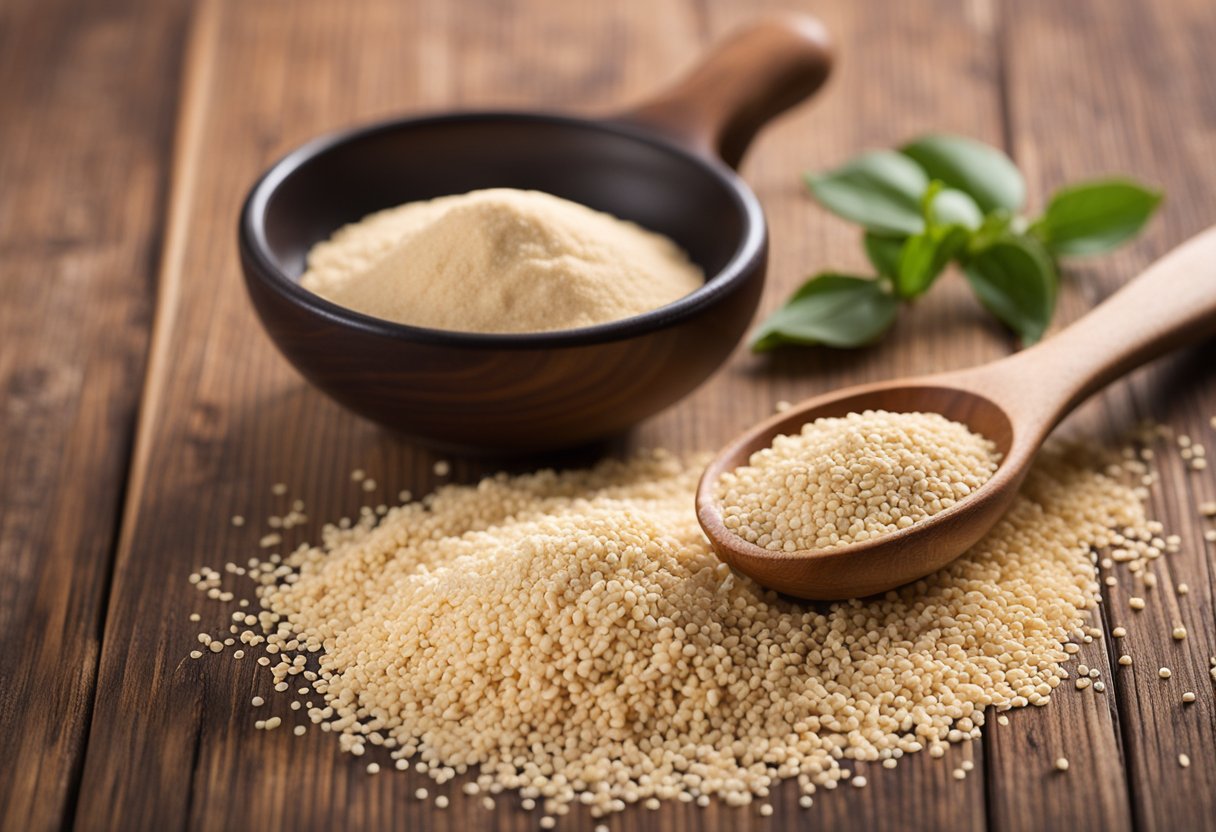
When it comes to finding a substitute for soya flour, there are a variety of grain-based alternatives that can be used in recipes. Here are some of the best options:
Wheat Flour
One of the most readily available substitutes for soya flour is wheat flour. All-purpose flour and whole wheat flour can be used in place of soya flour in equal amounts.
However, it’s important to note that wheat flour doesn’t contain as much protein as soya flour, so the final product may have a slightly different texture.
Buckwheat Flour
Buckwheat flour is another great option for those looking to avoid soya flour. It has a nutty flavor and is high in both protein and fiber. Buckwheat flour can be used as a 1:1 substitute for soya flour in most recipes.
Quinoa Flour
Quinoa flour is a gluten-free flour that’s high in protein and fiber. It has a slightly nutty flavor and can be used as a substitute for soya flour in recipes that call for a gluten-free flour.
Millet Flour
Millet flour is another gluten-free flour that can be used as a substitute for soya flour. It has a slightly sweet flavor and is high in protein and fiber. Millet flour can be used in equal amounts as a substitute for soya flour in most recipes.
Amaranth Flour
Amaranth flour is a gluten-free flour that’s high in protein and fiber. It has a slightly earthy flavor and can be used as a substitute for soya flour in recipes that call for a gluten-free flour.
Brown Rice Flour
Brown rice flour is a gluten-free flour that’s high in fiber and nutrition. It has a slightly nutty flavor and can be used as a substitute for soya flour in recipes that call for a gluten-free flour.
Overall, there are many grain-based substitutes for soya flour that can be used in recipes. When choosing a substitute, consider the protein, fiber, and nutrition content to ensure that the final product is still healthy and nutritious.
Using Soya Flour Substitutes in Baking
As a baker, I understand the importance of using the right ingredients to achieve the desired texture, volume, structure, moisture, and color in baked goods.
Soya flour is a popular ingredient in many baking recipes, but it is not suitable for everyone due to allergies or dietary restrictions.
Fortunately, there are many soya flour substitutes that can be used in baking without compromising the taste or quality of the final product.
When substituting soya flour with other flours, it is important to consider the type of recipe and the desired outcome.
For example, some flours may work better for cakes, while others may be better for bread or cookies. Here are some common soya flour substitutes and their properties:
- Chickpea flour: This flour is made from ground chickpeas and has a nutty flavor. It is a good substitute for soya flour in recipes that require a dense, chewy texture, such as pancakes, bread, and pizza crusts.
- Rice flour: This flour is made from ground rice and has a mild, slightly sweet flavor. It is a good substitute for soya flour in recipes that require a light, crispy texture, such as waffles, muffins, and cookies.
- Almond flour: This flour is made from ground almonds and has a rich, nutty flavor. It is a good substitute for soya flour in gluten-free baking recipes that require a moist, dense texture, such as cakes and bread.
- Oat flour: This flour is made from ground oats and has a mild, slightly sweet flavor. It is a good substitute for soya flour in recipes that require a chewy, nutty texture, such as cookies, muffins, and bread.
When using soya flour substitutes, it is important to adjust the amount of liquid and leavening agents in the recipe to achieve the desired consistency and rise.
For example, some flours may require more liquid to achieve the same consistency as soya flour, while others may require less leavening agents to achieve the same rise.
In conclusion, there are many soya flour substitutes that can be used in baking to achieve the desired texture, volume, structure, moisture, and color in baked goods.
By experimenting with different flours and adjusting the recipe as needed, you can create delicious and healthy baked goods that meet your dietary needs and preferences.
Using Soya Flour Substitutes in Cooking

As a versatile ingredient, soya flour can be used in various dishes, including soups, stews, sauces, and savory dishes.
However, if you’re looking for a substitute for soya flour, there are several options available that can help you achieve the same texture and consistency.
One of the best soya flour substitutes is chickpea flour. It has a similar texture and consistency, making it an excellent choice for thickening agents in soups, stews, and sauces. Chickpea flour is also high in protein, making it a healthy alternative to soya flour.
Another great option is rice flour, which has a mild flavor that makes it suitable for use in many different types of dishes. It is also much lower in fat than soya flour, making it an ideal choice if you want to avoid too many calories or saturated fats.
Lupin flour is another excellent substitute for soya flour. It has a nutty flavor and a similar texture, making it an ideal choice for use in savory dishes and thickening agents.
When using soya flour substitutes in cooking, it’s essential to keep in mind the texture and consistency of the dish you’re making. For example, if you’re making a sauce, you may need to adjust the amount of substitute you use to achieve the desired thickness.
In conclusion, there are several soya flour substitutes available that can help you achieve the same texture and consistency in your dishes.
Chickpea flour, rice flour, and lupin flour are all excellent options that can be used as a thickener or thickening agent in soups, stews, sauces, and savory dishes.
Nutritional Comparison of Soya Flour and Its Substitutes

When it comes to nutrition, soya flour is a high-protein, low-carbohydrate, and low-fat ingredient that is also a good source of dietary fiber, vitamins, and minerals.
However, if you are looking for a soya flour substitute, there are several options that can provide similar nutritional benefits.
Chickpea flour is a great substitute for soya flour as it is also high in protein and dietary fiber. It is also a good source of magnesium, calcium, and iron.
All-purpose flour is another option, but it is not as nutritious as chickpea flour or soya flour. Rice flour is a gluten-free option that provides a good amount of dietary fiber, but it is lower in protein than soya flour.
Quinoa flour is a healthy alternative to soya flour as it is high in protein and dietary fiber. It is also a good source of magnesium, iron, and calcium.
Coconut flour is another option that is low in carbohydrates and high in dietary fiber, but it is not as high in protein as soya flour.
Legume flour, such as lentil flour or pea flour, is a good substitute for soya flour as it is also high in protein and dietary fiber. It is also a good source of iron and calcium.
Lupin flour is another option that is high in protein and dietary fiber, and it is also a good source of magnesium and iron.
In summary, there are several soya flour substitutes that can provide similar nutritional benefits. Chickpea flour, quinoa flour, and legume flour are all high in protein and dietary fiber, while coconut flour and rice flour are good options for those looking for gluten-free alternatives.
It is important to choose a substitute that fits your dietary needs and preferences.
Taste and Texture of Soya Flour Substitutes
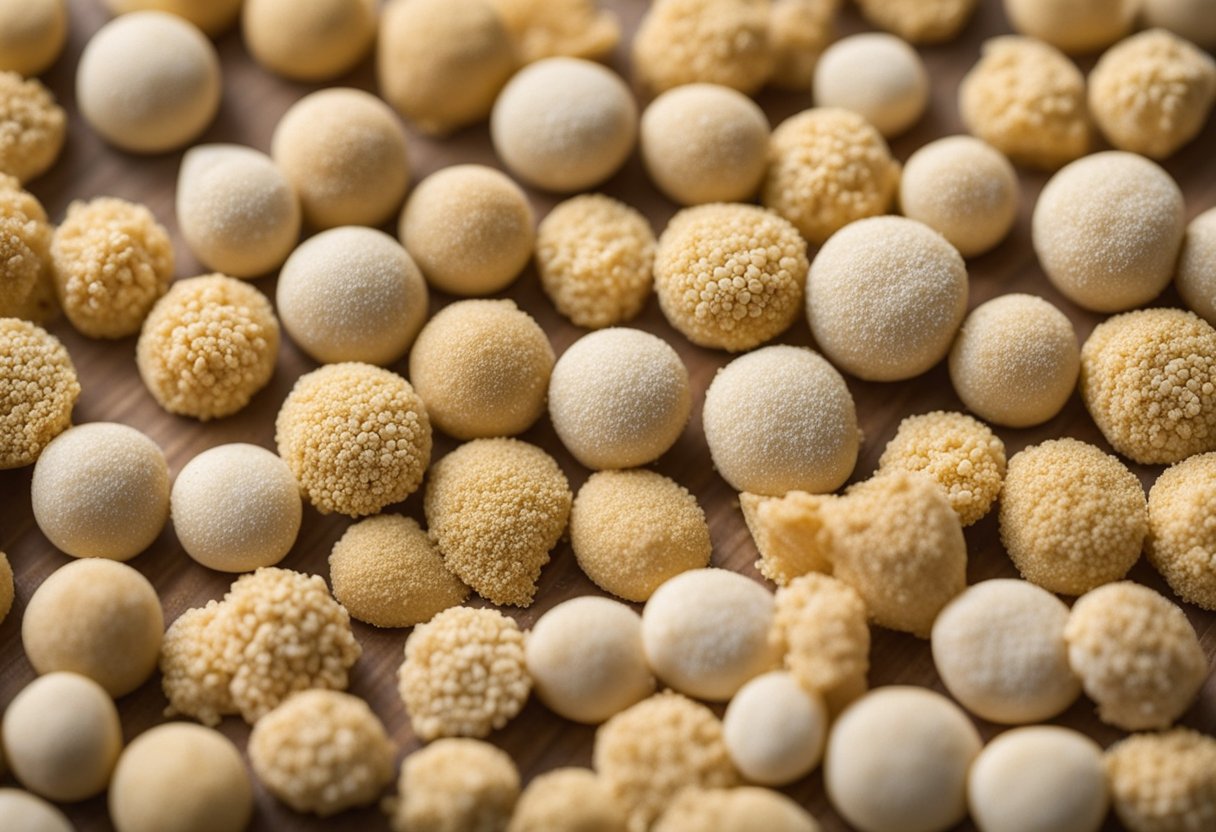
When it comes to finding a substitute for soya flour, one of the most important factors to consider is taste. Soya flour has a distinct nutty flavor that can be overpowering in some recipes.
However, many of the substitutes on the market have a milder taste that won’t overpower your dish.
In terms of texture, soya flour is known for its ability to add a crispy texture to baked goods. Some of the substitutes we’ll discuss below can also add a crispy texture, while others may have a more cake-like consistency.
One popular substitute for soya flour is rice flour. Rice flour has a similar texture to soya flour and is not overpowering in taste. It can be used in a variety of recipes, from baked goods to sauces.
Another great option is quinoa flour. Quinoa flour has a nutty taste similar to soya flour, but it is not as overpowering. It also has a light and fluffy texture that works well in baked goods.
For those who are looking for a gluten-free option, chickpea flour is a great choice. It has a slightly nutty flavor and a consistency that is similar to wheat flour. It can be used in a variety of recipes, including bread, pancakes, and pizza crust.
If you’re looking for a substitute that can add a crispy texture to your baked goods, consider using cornmeal. Cornmeal has a slightly sweet taste and a texture that is perfect for creating a crispy crust on bread or pizza.
Lastly, for those who are looking for a substitute that is high in protein, consider using lupin flour. Lupin flour has a slightly nutty taste and a texture that is similar to wheat flour.
It is also high in protein, making it a great choice for those who are looking to add more protein to their diet.
Overall, there are many great substitutes for soya flour that can be used in a variety of recipes. Whether you’re looking for a gluten-free option or a substitute that can add a crispy texture to your baked goods, there is a substitute out there that will work for you.
Frequently Asked Questions
Where can I find soy flour substitutes?
Soy flour substitutes can be found in most health food stores and specialty grocery stores. They may also be available online through retailers such as Amazon or Thrive Market.
What are some good substitutes for soy flour?
Some good substitutes for soy flour include chickpea flour, almond flour, coconut flour, and oat flour. These alternatives can be used in a 1:1 ratio when substituting for soy flour in recipes.
What are the nutritional benefits of soy flour substitutes?
Soy flour substitutes can provide a variety of nutritional benefits depending on the type of substitute used.
For example, chickpea flour is high in protein and fiber, while almond flour is rich in healthy fats and vitamin E. Coconut flour is low in carbohydrates and high in fiber, making it a good option for those following a low-carb diet.
Are there any gluten-free soy flour substitutes available?
Yes, there are several gluten-free soy flour substitutes available, including chickpea flour, almond flour, and coconut flour. These alternatives can be used in gluten-free recipes as a substitute for soy flour.
What are some low-carb alternatives to soy flour?
Some low-carb alternatives to soy flour include almond flour, coconut flour, and flaxseed meal. These substitutes can be used in low-carb recipes to replace soy flour.
Can I make my own soy flour substitute at home?
Yes, you can make your own soy flour substitute at home using other types of flour. For example, you can make chickpea flour by grinding dried chickpeas in a food processor or blender.
Similarly, almond flour can be made by grinding blanched almonds in a food processor or blender.


